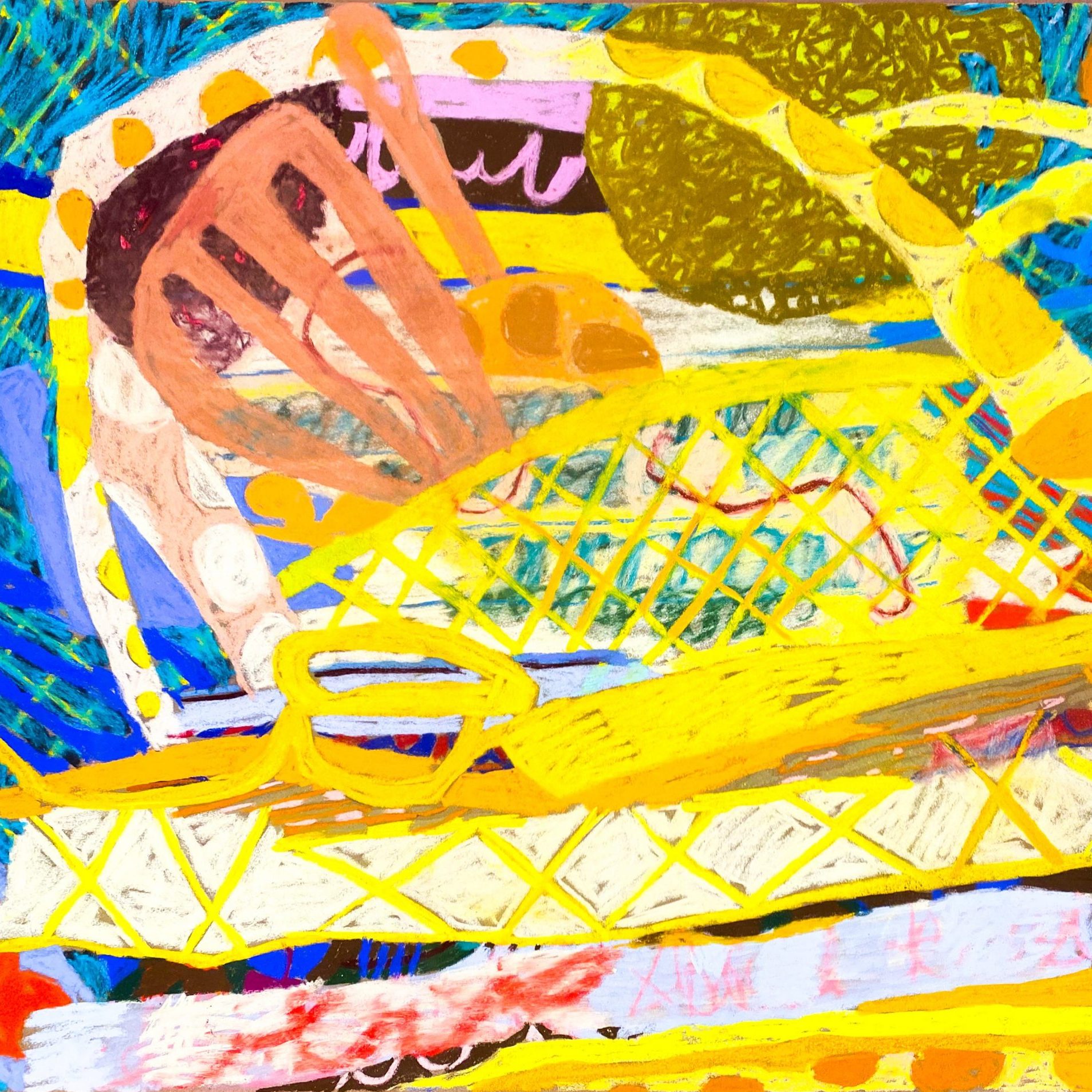CAROLYN CASE
“Before the pandemic, I worked with imagery inspired by my kitchen, specifically doing the dishes and the kitchen sink. However, since the pandemic, my relationship with my kitchen has intensified. The kitchen has become more of a complicated space, simultaneously a relentless chore and a magical maker space.”
Carolyn Case2021
Reynolds Gallery is pleased to announce the opening of Test Kitchen, an exhibition of recent work by Maryland-based artist Carolyn Case. In her first solo exhibition with Reynolds Gallery, Case presents pastel drawings and oil paintings on panel which abstractly render and activate intimate spaces. Test Kitchen opens on Thursday, March 4 with a reception with the artist from 3pm – 7pm, and will be on view through May 1, 2021.
At the root of Carolyn Case’s exhibition work is a pressing, humanistic desire to make sense of the events of the past year. Her vibrant pastels with velvety surfaces, and thick, layered oil paintings express an intensity which encompasses seduction, playfulness, and aggravation. Linking each piece is the familiarity in composition; Case’s bubbly shapes and scratchy lines form abstracted landscapes or echo curves of a spoon, an animal, or a glass bottle. By titling her work Yellow Sink, Shadow Sink and Sibling, Case extends themes of turning inward, reconnecting with our everyday spaces, and rejoicing in or rejecting the security of daily routine.
Before the pandemic, I worked with imagery inspired by my kitchen, specifically doing the dishes and the kitchen sink. However, since the pandemic, my relationship with my kitchen has intensified. The kitchen has become more of a complicated space, simultaneously a relentless chore and a magical maker space. Cooking and dishwashing have taken on new urgency. In our family of four and everyone eating at home, cooking and cleaning punctuate my day. In the Fall, Twitter, the elections, and police violence consumed my thoughts in the evening, and cooking was an outlet that offered a tangible outcome. I began photographing the sink,especially after a meal when the water was multi-colored, and bits of spinach or noodles floated about. The translucent water filled with forms became the specific imagery I thought about as I painted. The dedicated scheduled time for sustenance also became the content of the work. No matter what was happening in the studio, I knew I had to stop at five to start dinner. There were days when my resentment at having to stop working was overwhelming. While other days when everything seemed uncertain in the studio and the world, I looked forward to that time that would end with dinner cooked and the kitchen clean. I often find myself thinking about how conscribed duties act as both the jailor and the liberator. Having a creative practice while in a family, I have tried to make peace with this struggle by making this tightrope walk my work’s content.
Carolyn Case received her Bachelor of Fine Arts from California State University and Master of Fine Arts from Maryland Institute, College of Art (1994, 1997). She currently lives in Baltimore where she has been a professor in painting and drawing at the Maryland Institute College of Art since 2011. She is the recipient of fellowships from the Robert Rauschenberg Foundation, the Maryland Institute of Art and Vermont Studio Center, as well as a residency from the Kanoria Art Center in Ahmedabad, India. She has exhibited at the Katzen Art Center, the Corcoran Gallery, Hemphill Fine Arts in Washington, DC and the Los Angeles County Museum of Art, California.












